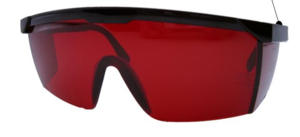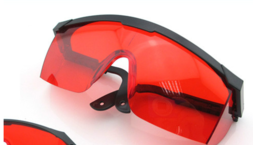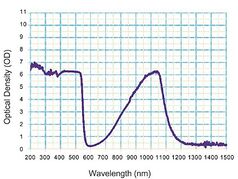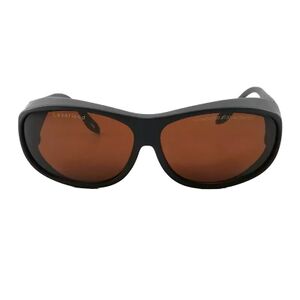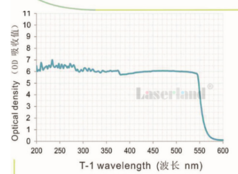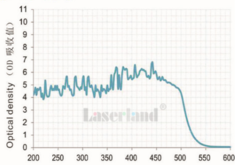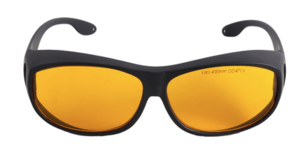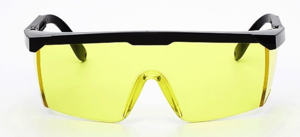暗期
Dark period is a way for sleepers to stabilize their circadian rhythms in the absence of long blocks of sleep and increase the quality of SWS. It also prevents certain health issues from arising. For most schedules, it should start 1-3 hours (2h is recommended in most cases) before the dusk (SWS peak) sleep block and continue for around 8 to 12 hours afterwards.
根拠
Before the advent of electrical lighting in modern times, humans historically had a stable period of time during the night in which there was little light. This kept their circadian rhythms stable and synchronized to the natural day/night cycle.
Modern humans often use electric lighting during the night. This can cause difficulty as the body thinks it is still daytime even if it is already midnight, and is part of the reason why people often experience the desire to sleep later and later each day.[1] For monophasic sleepers, a somewhat short dark period can be maintained during their long sleep hours, which keeps their circadian rhythms relatively stable.
However, for polyphasic sleepers who might not have such long sleep blocks, this poses an issue. As artificial light is present around the clock, melatonin production is suppressed and the quality of SWS is compromised. This causes extra difficulty in adaptation and is also unhealthy, as circadian disruption is linked to various health issues.[2] To avoid this, polyphasic sleepers (and monophasic sleepers too) should practice a dark period, during which no blue, green or white (as this contains both blue and green) light should enter the eye.
タイミング
The optimal timing of dark period depends on your schedule. For most schedules, it should begin around 1-3 hours (the default recommendation is 2 hours) before your dusk/evening sleep (core for Everyman, first core for Dual core, TC1, and TC2, and evening core for Triphasic.
- For E1 and Siesta, it should start before core and end immediately upon waking.
- For E2, E3 (including extended), and E4 it should last until the end of first nap as long as that nap is within 5 hours of the core.
- For Segmented and Dual core, it should cover the entire core gap (gap between first and second core for Tri core), so long as it does not exceed 12 hours.
メカニズム
The intrinsically photosensitive retinal ganglion cells (ipRGCs) controls the secretion of melatonin by the pineal gland. Their sensitivity to light is independent from normal vision, which is mediated by cones and rods in the eyes. The ipRGCs have a peak sensitivity at 480 nm and drops off on both sides.[3] During the dark period it is preferable to avoid light altogether, as all light provides some melatonin suppression, but this is not reasonable for most people's lifestyles. Instead, is best to simply avoid as much bright light as possible, and limit light intake to only necessary yellow, orange and red light in order to limit melatonin suppression as much as possible.
方法
ゴーグル
The most popular and versatile method for achieving a dark period is through the use of red-coloured laser goggles (colloquially known as "DP goggles" in the Discord community). There are several types of these available, and below is a comparison between their light-filtering lens tints.
Notes:
- The dark red goggles may be too dark and reduce vision, but this would be useful during daylight hours or in bright environments.
- The light red goggles let in substantially more red and green light than the orange one, but less yellow. The overall brightness appears to be slightly higher for the orange one, but the orange one allows for more colour perception. Based on the melanopic sensitivity function, both should provide similar levels of protection against melatonin suppression.
- There is a significant price difference between the first two and the third and the fourth one. However, the third and fourth ones have better quality (fewer rough edges on the plastic, more uniform transparency, and provide more options).
赤い室内照明
If you live in a space where you are in control of the lighting, it is possible to use either RGB or pure red LED lights during dark period to avoid the inconvenience and/or discomfort from wearing goggles. However, you must still be sure that you wear dark period glasses when looking at screens such as your electronic devices, and if you live in an area with bright lights outside your house, it is best to draw your blinds (blackout curtains ideally) in order to block any external light.
青色光フィルター
| Name | OS support | Automated? | Note |
|---|---|---|---|
| SunsetScreen | Windows | Yes | last full free version |
| F.lux | Windows, Linux | limited | faq link |
| Redshift | Linux(X11), Windows(limited) | Yes | configuration last full free version |
| iOS&macOS native feature | iOS, macOS | No | tutorial |
| NegativeScreen | Windows | No | free download |
For all of these software packages, you should change the color temperature to the lowest possible usable value (1000K for redshift, 800K for f.lux).
For the purpose of DP management on Windows OS, SunsetScreen is the preferable choice over the widely more popular f.lux, as the latter does not allow setting user defined start and beginning times in conjunction and enforces a preset duration for the color shift, which will not be optimal for many schedules, to circumvent this, the user has to manually shift down the color temperature (by repeatedly pressing "Shift+Alt+Page Down" key), moreover, this custom setting is not stored and overwrites the automatic color shift timing, forcing the user to repeat the same procedure at least once per day. Additionally, SunsetScreen allows setting predefined values for brightness for day and night setting separately and offers the option of toggling a color inversion mode by hotkey.
An alternative, potentially more effective, method of software based color filtering is employed by NegativeScreen. It offers 12 different predefined color modification schemes, which tend to produce more usable and vastly more customizable results (it is possible to create custom inversion profiles with the help of a GUI application) than the more basic color inversion software like the integrated Windows color inversion mode. Of particular interest for the purpose of DP management is the "inverted red" mode, which drastically reduces the amount of visible light emitted by the display (especially when originally light colored content was presented on the screen), while having a similar color shifting effect to the other software presented above.
For Linux on Wayland, please use the night light options offered by your desktop environment (KDE and GNOME offer this feature). Editing the color temperature manually might be necessary to achieve the amount needed. Change color temperature on GNOME
Note that, even with all the red color filtered away, all screens, except for OLED screens on some phones, will bleed backlight, which is white and can compromise your dark period. Depending on the quality and brightness setting of your screen, this may or may not be an issue.
暗期を含む日々の暮らし
Using any of the above methods to achieve a dark period should limit the accuracy of your perception of non-red lights during your dark period. This may impair you ability to do certain tasks. However, there are some methods to mitigate this.
単色フィルター
Using red goggles or red filters can make it difficult to see certain colors on your screen. To solve this problem, you may wish to temporarily remove colors on your screen with a monochrome/greyscale filter. Here are some ways to do it:
On iOS and macOS, go to Accessibility > Display > Color Filters, turn on Color Filters and select “Greyscale”
On Android, open up Settings, then tap Digital Wellbeing & parental control, then choose Wind Down, you can set up a schedule for the evening, which will turn your screen greyscale for the scheduled time. Alternatively, go to Settings > Developer Options > Simulate colour space and choose Monochromacy. (For this, you need to have Developer Options enabled. link)
On GNOME, you can use the extension Desaturate All (remember to checkout to the feature branch) to turn your display monochrome with the click of a button. It is possible to use switch back and force between red-only and red-greyscale mode to make a rough estimate of the underlying colour (this also applies to other methods).
On Windows 10, you can use the key combination Ctrl + Windows + C to toggle a grayscale filter. This can be configured by finding Turn color filters on or off from the start menu.
カラーピッカー
When there is a need to determine some colours with precision, it is best to use a colour picker program. These programs grabs a pixel from your screen and records the brightness value in each of the subpixels.
度付き眼鏡
If you need prescription glasses for vision correction, you may wear both at the same time via any of the three methods listed below.
ゴーグルの上から掛ける
Wearing your prescription glasses outside the goggles is the preferred option for the first and second goggle types on the table, as there is less light leakage.
眼鏡の上からゴーグル
It may be possible to wear most styles of corrective lenses inside of dark period goggles, depending on the model of your goggles. The orange and yellow goggles as pictured in the above table can fit over many glasses models, but it may not be particularly comfortable, depending on the shape of the prescription frames.
レンズをゴーグルに接着する
This might be the most comfortable option once completed. Detaching your prescription lenses from their frames and glue them to the top of your goggles. Hot glue will not melt either the lenses or the first two goggles (the others have not been confirmed).
Tips:
- Choose the glasses that match in curvature with your goggles, so it would be easier to attach.
- Seal the gap completely around to prevent moisture from getting in, as it will be extremely difficult to remove afterwards.
- Perform the operation in a dry and preferable cold environment to minimize the amount of moisture in the gap. Failure to do so can result in the goggles fogging up in cold environments.
Warnings:
- Might cause slight dizziness at first due to axial misalignment. Try holding your prescription lenses in front of and behind your dark period goggles while they're on your face to determine which feels better before gluing them.
- The glue will not be easy to remove once attempted.
関連アドバイス
Fasting period
It is recommended that you maintain a fasting period that covers the entirety of your dark period, as food is also an important zeitgeber, or circadian cue. Intermittent fasting has been anecdotally suggested to work well with polyphasic sleep. It is preferable to eat during the day rather than at night. A breakfast helps set the circadian day start. Water may be consumed, but any xenobiotic consumables will disrupt your circadian rhythm.
Exercise
Intense exercise such as strenuous weight lifting and long-distance running should be avoided during dark period, as this might disrupt the circadian rhythm.[4] In addition, exercise may also disrupt sleep and/or increase sleep onset as a result of increased heart rate. However, during adaptation, it might be desirable to use exercise as a means to stay awake. Choose mild exercise routines and do not exercise for an extended period of time to avoid circadian disruption or sleep onset issues; both of which may hinder your sleep quality and harm your adaptation.
See also
- Crimsonflwr's free and comprehensive dark period course (registration to polyphasic.net required).
- Crimsonflwr's dark period calculator. Refer to the above course for instructions regarding usage.
References
- ↑ Joo EY, Abbott SM, Reid KJ, Wu D, Kang J, Wilson J, Zee PC (April 2017). "Timing of light exposure and activity in adults with delayed sleep-wake phase disorder". Sleep Medicine. 32: 259–265. doi:10.1016/j.sleep.2016.09.009.
- ↑ Brainard J, Gobel M, Scott B, Koeppen M, Eckle T (May 2015). "Health implications of disrupted circadian rhythms and the potential for daylight as therapy". Anesthesiology. 122 (5): 1170–1175. doi:10.1097/ALN.0000000000000596. PMC 4632990. PMID 25635592.
- ↑ CIE TN 003:2015, Report on the First International Workshop on Circadian and Neurophysiological Photometry, 2013, published 2015
- ↑ Wolff CA, Esser KA (2019). "Exercise timing and circadian rhythms". Current Opinion in Physiology. 10: 64–69. doi:10.1016/j.cophys.2019.04.020. ISSN 2468-8673.

